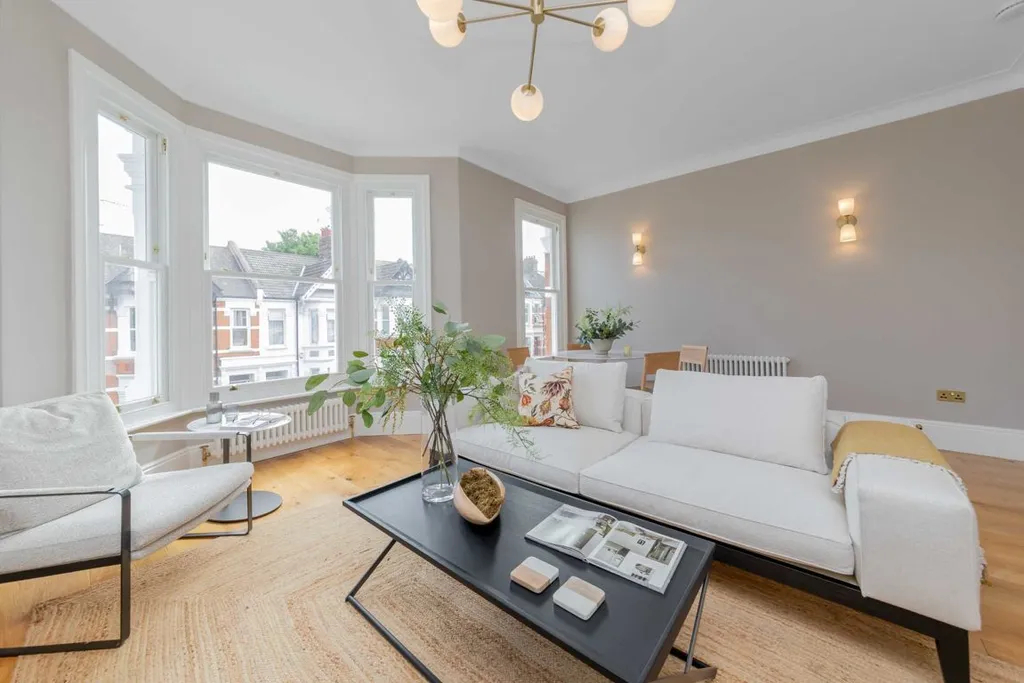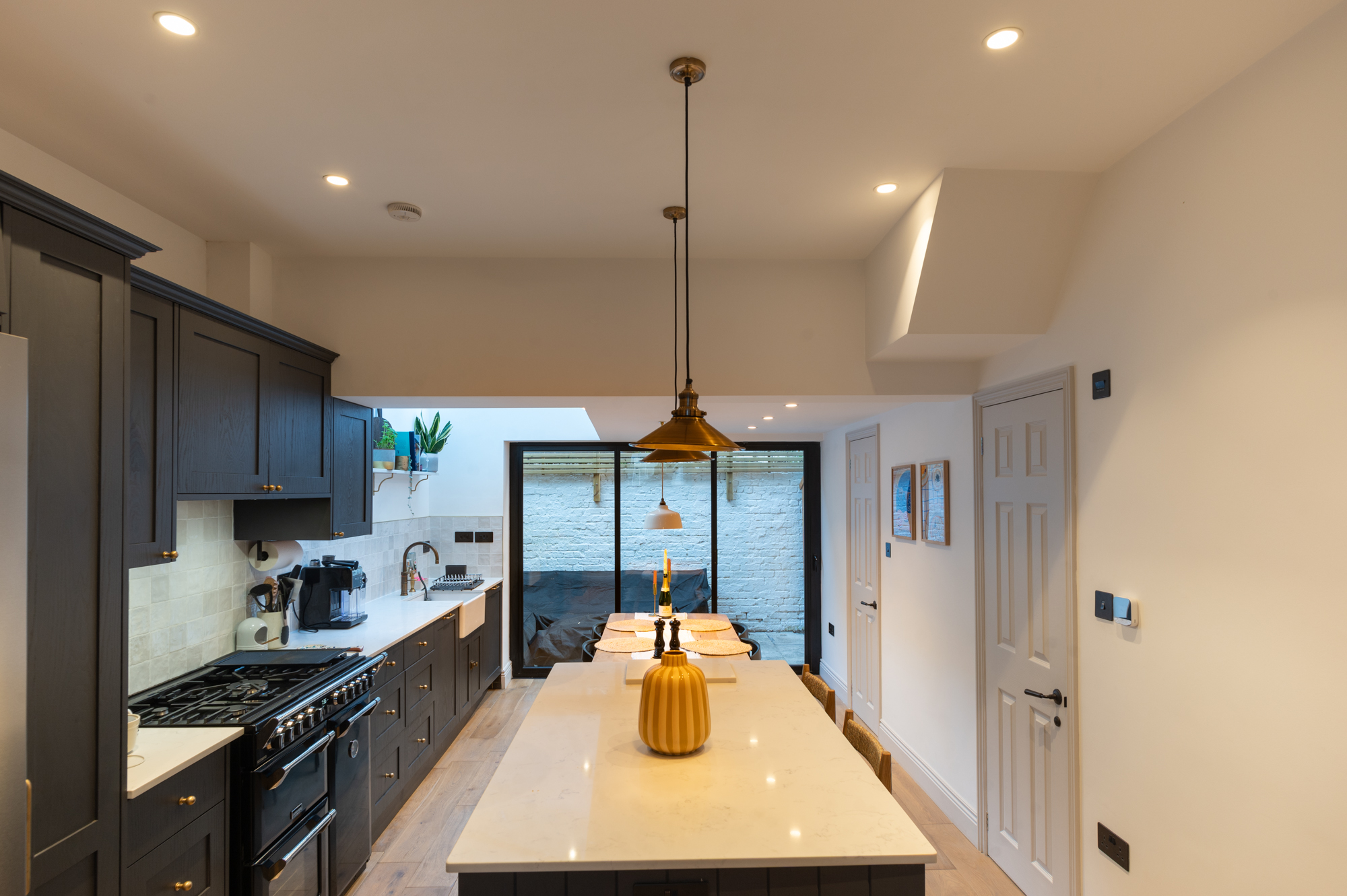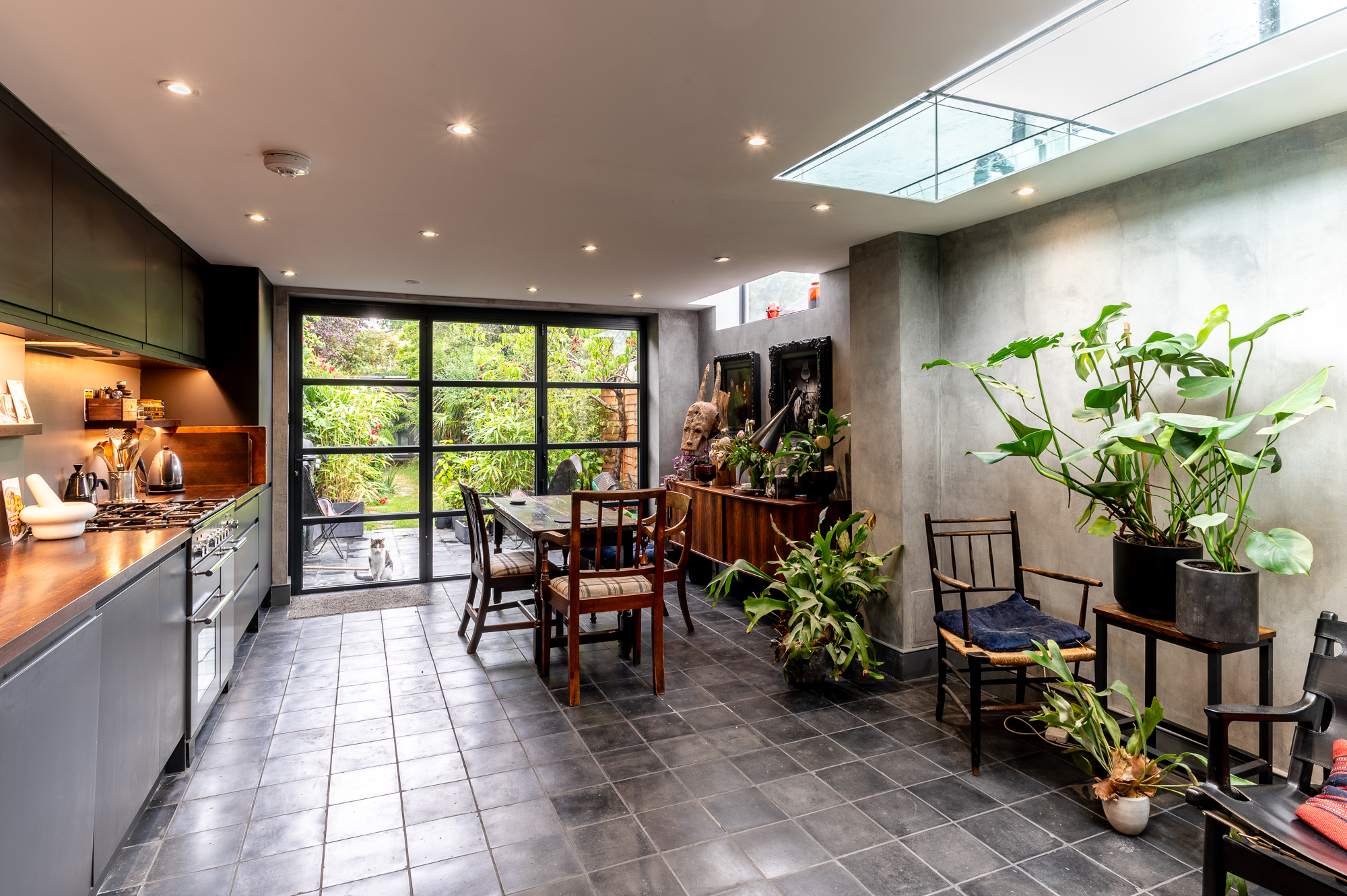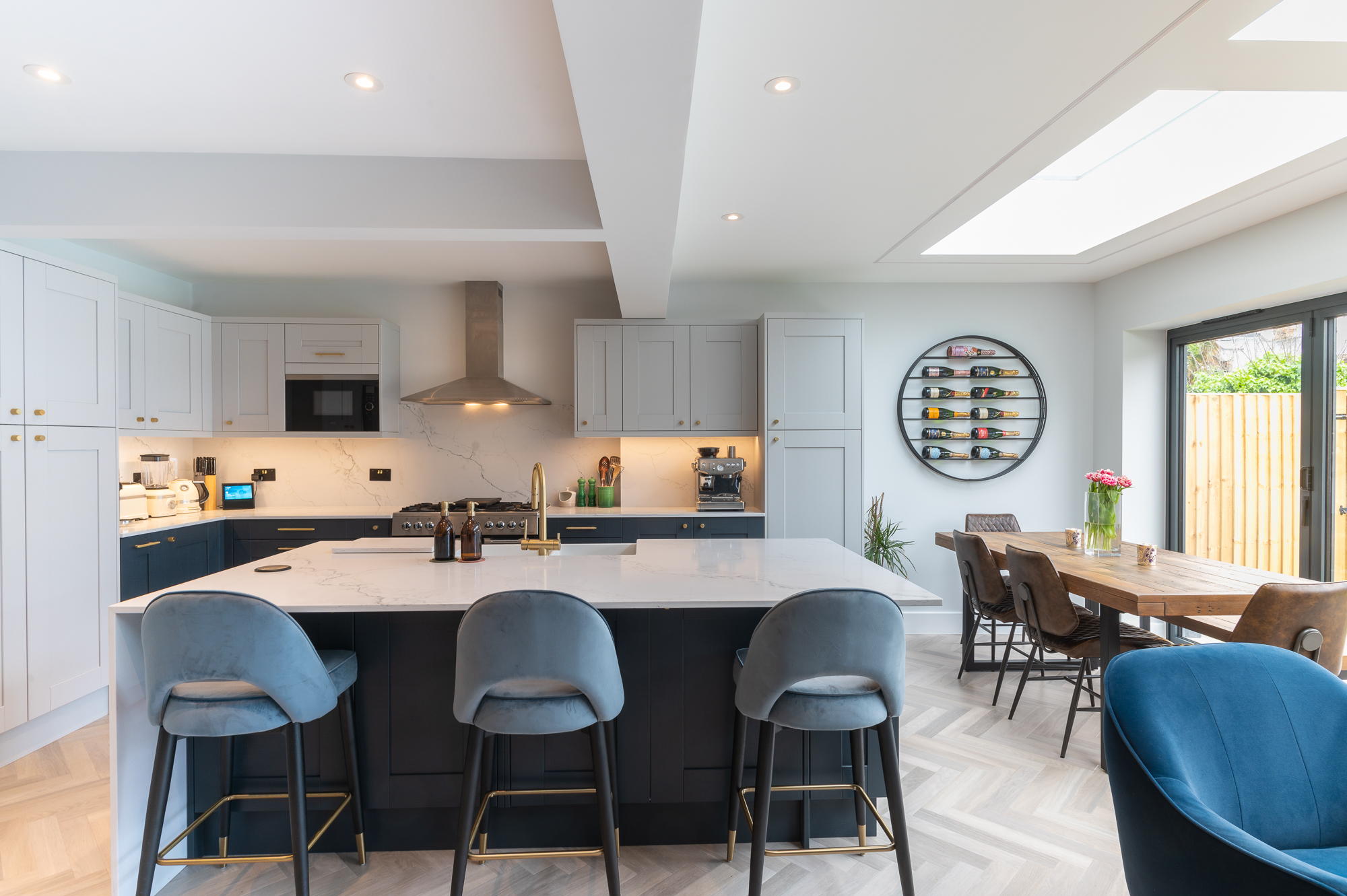Featuring stylish architecture, stunning parks, and numerous trendy cafes and hangouts, it is no wonder that Notting Hill is one of the most sought-after neighbourhoods in London. Needless to say, once you reside in Notting Hill, you never want to leave except if you need the extra space.
Loft conversions make this entirely possible. It allows homeowners to expand and upgrade their homes, even when faced with increasing family sizes or changing lifestyles.
With the right experts and conversion specialists, it is possible to create beautiful, bespoke loft conversions that not only add space but also increase the value of your Notting Hill home.
A loft conversion is an opportunity for homeowners to utilise unused or ill-used loft spaces within their homes to expand their living spaces. It also provides homeowners the chance to design and create unique spaces within their homes that cater to their specific needs and lifestyles.
Loft conversions are typically categorised into different types based on the amount of structural work involved. Some of the most popular types of loft conversions for Notting Hill homes include:
Velux loft conversion
The Velux or rooflight loft conversion is easily the simplest style of loft conversion, which is both minimally disruptive and extremely cost-effective. The simplicity and uncomplicated design of a skylight loft conversion make it possible to construct it without requiring planning permission.
It involves the installation of roof lights (or skylights) into the pitch of the existing roof without making other major structural changes to the roof. However, since there is no extension of the roof taking place, it is imperative that there already be sufficient head height available.
Dormer extension
Dormer extensions are increasingly viewed as a balanced option for a loft conversion; in that they help create more headroom and floorspace than a roof light conversion but are cheaper and less complex to construct when compared to a mansard.
The dormer roof extension involves vertically extending the existing roof to create a flat-roofed or pitched roof dormer. The choice of style is largely based on the aesthetic created, while the installation of dormer windows further enhances the space and brightens the room.
Dormer extensions are suitable for almost any type of home and are particularly popular in semi-detached properties that have a sloping roof. And though they may require planning permission, dormer loft extensions allow for the design and creation of beautiful, bright, and airy rooms.
L-shaped Dormer extension
Essentially a larger and more spacious version of the rear dormer extension, the L-shaped extension results from the combination of two dormers that are connected together.
These are more suited to Victorian and Edwardian properties that may already have a rear extension and help create a great deal of added space, perfect for designing extra bedrooms, en-suites, or home offices.
These dormers do not always require planning permission if they fall under permitted developments, but it is always best to check before initiating the build.
L-shaped dormer extensions may cost between £30,000 and £60,000, but they are an excellent investment as they allow for the creation of multiple additional rooms.
Hipped roof extension
Detached and semi-detached properties that feature a sloping roof are ideally suited for hipped roof loft conversions.
As this type of extension involves considerable structural work, including transforming the slope of the roof into a vertical wall, it is one of the more expensive types of loft conversions (costing upwards of £40,000) and generally requires planning permission.
Hipped roof extensions, however, add a great deal of living space, are visually appealing, and add incredible value to the property. Therefore, they are considered to be well worth the initial investment.
Double Mansard
Particularly suited to period properties, including terraced, detached, and semi-detached homes, a double mansard is the largest and most extensive type of loft conversion.
It involves creating a mansard roof by altering the slope of the roof to an angle of 72 degrees at the front and rear of the house, essentially creating a new story. And though this invariably requires planning permission and is expensive to construct, these extensions have a dramatic effect on the space within.
With the extensive space made available, a double mansard may be used to create multiple rooms, including one or two bedrooms and en-suites. All of which have a significant impact on the overall value of the property.
Loft conversions in Notting Hill can range in cost from a modest £45,000 to a more extravagant £130,000.
This is because the cost of a loft conversion depends on multiple factors, such as the design and dimensions of the conversion, as well as the fittings and insulation that need to be installed.
Hiring a professional team that specialises in loft conversions essentially guarantees a successful project. This is because their expertise plays an important role in every stage of the plan, design, and build. This includes:
- Optimising the space to fit your specific requirements or styles
- Choosing the right design that is suitable for the space
- Understanding and advising you on the feasibility of the plan by considering the area, cost and availability of building materials, environmental factors, and building guidelines
- Overseeing all aspects of the build, including technical work and installations
Quite simply, a professional team will not only help you to design a loft conversion that makes the most of the space available while enabling you to stick to a specific budget and timeline; but through their expertise and experience, you can be sure to avoid the many mistakes and errors that would prove costly in the long run.
Loft conversions can help you create stunning additions that can dramatically upgrade and breathe new life into your beautiful family home. And with the right help and advice, building the ultimate loft conversion can prove to be a valuable investment.
Good Design and Build are the primary loft conversion specialists in West London. With decades of experience and unmatched expertise, we help you design and create high-quality conversions that come backed by warranties.
Our incredible team includes architects, builders, technicians, and project managers. This enables us to oversee every aspect of the loft conversion project from start to finish.
This includes everything from the initial survey of the location to planning and designing the loft conversion in minute detail, applying for and securing the requisite legal permits and approvals, and managing the daily on-site work.
We also go above and beyond to provide you with a stress-free experience that ensures you get a new space that is perfectly aligned with your vision as well as your budget.
The cost of a loft conversion can range from £35,000 to £125,000. This range is a clear representation of the myriad of factors that affect the cost of the conversion.
Naturally, the complexity of the loft conversion and the amount of structural work involved play a significant role in the overall cost of the build. Other factors that influence the budget include:
- Location
- Building materials
- Fittings and fixtures
- Insulation
The style of the room you hope to design also affects the cost of the project. For example, creating a bathroom with all the plumbing requirements and fittings would be more expensive than designing a modest home office.
And while loft conversions significantly increase the value of your home, it would be prudent to check the ceiling price of properties in your neighbourhood to ensure that you do not overspend on the loft conversion build.
Most loft conversions fall under permitted developments and, therefore, do not require planning permission. However, for a loft conversion to qualify as a permitted development, it must meet certain criteria and specific limitations. These include:
- The property must not be listed or located in a conservation area.
- The loft conversion must not exceed the height of the existing roof.
- The loft conversion must not include balconies, verandas, or raised platforms.
- Side-facing windows must be obscurely glazed.
- The volume of enlargement must not exceed the original roof space by more than 40 cubic metres for terraced houses.
If the loft conversion does not fall under permitted developments, then planning permission will be required. The process for securing planning permission involves submitting a comprehensive application, including detailed plans of the proposed design, and may take up to 8 weeks for approval.
Due to their shared walls, terraced houses do, however, require party wall agreements. These must be in place before the build can commence to avoid any legal disputes in the future.
Good design and build do it all.
This includes but is not limited to:
- Survey of the location and property to determine suitability
- Drawing detailed plans and diagrams of the proposed loft conversion
- Coordinating with local authorities and securing the requisite approvals
- Procuring building materials, fittings, and fixtures
- Ensuring a smooth process and a continuous schedule
- Overseeing daily on-site build work
- Overall project management
And so much more.
Our incredible team comprises surveyors, engineers, architects, builders, technicians, and project managers; enabling us to create high-quality extensions that are backed by warranties and allowing you to enjoy a truly stress-free experience.
How we deliver projects
Our process is simple and divided into two distinct phases with separate contracts: Design and Build. As a client you only commit to one phase at a time depending on what stage of the process you are in. Each phase consists of three stages as described below.
1. Design
This is the kick-off point for your project. We carry out a complete architectural measured survey of the property. This allows us to create accurate CAD design drawings. This is followed by a design meeting to start discussing your ideas in more detail.
2. Planning
At this stage we finalise the designs with you and start preparing planning applications as needed. We place a high priority on ensuring that plans, designs and schedules are all based on a thorough and detailed understanding of planning guidelines. We co-ordinate with local authorities until the decision is made, and the planning approval is secured.
3. Technical
Once the planning consent is secured, we translate the design drawings into more detailed technical drawings for the purposes of building control and construction. This also includes specifications and structural calculations. At this stage, we will also submit to you our ‘no obligation’ quote for the build phase.
4. Pre-build
90% of our clients decide to stick with us after the design phase is completed. Once the build contract is signed, we kick off the process by making sure all the pre-build processes are complete. These include assistance with party wall agreements, Thames Water build over agreement, submitting building control application, and preparing method statements etc as needed. This stage ends with a pre-start meeting with your foreman before the actual build begins.
5. Build
One of our foremen will be dedicated to your project and will be on-site to manage everyday works. Our project managers will be overseeing the works to make sure they are completed to high standards, within your budget and on time. Throughout the process we will keep you updated with the progress and coordinate the works with third parties such as kitchen or flooring suppliers. We will also advise and guide you to choose any suppliers if needed.
6. Handover
As the build draws to finish, we will help to iron out any ‘snags’ to make sure everything is completed to your satisfaction. We will put together all necessary certificates such as gas, electricity and building control completion along with warranties for glazing, boiler etc. At the final completion meeting, we will hand you these documents, together with the keys to your house. Needless to say, you can contact us any time after this, if you want us to look at something.
This is the kick-off point for your project. We carry out a complete architectural measured survey of the property. This allows us to create accurate CAD design drawings. This is followed by a design meeting to start discussing your ideas in more detail.
At this stage we finalise the designs with you and start preparing planning applications as needed. We place a high priority on ensuring that plans, designs and schedules are all based on a thorough and detailed understanding of planning guidelines. We co-ordinate with local authorities until the decision is made, and the planning approval is secured.
Once the planning consent is secured, we translate the design drawings into more detailed technical drawings for the purposes of building control and construction. This also includes specifications and structural calculations. At this stage, we will also submit to you our ‘no obligation’ quote for the build phase.
90% of our clients decide to stick with us after the design phase is completed. Once the build contract is signed, we kick off the process by making sure all the pre-build processes are complete. These include assistance with party wall agreements, Thames Water build over agreement, submitting building control application, and preparing method statements etc as needed. This stage ends with a pre-start meeting with your foreman before the actual build begins.
One of our foremen will be dedicated to your project and will be on-site to manage everyday works. Our project managers will be overseeing the works to make sure they are completed to high standards, within your budget and on time. Throughout the process we will keep you updated with the progress and coordinate the works with third parties such as kitchen or flooring suppliers. We will also advise and guide you to choose any suppliers if needed.
As the build draws to finish, we will help to iron out any ‘snags’ to make sure everything is completed to your satisfaction. We will put together all necessary certificates such as gas, electricity and building control completion along with warranties for glazing, boiler etc. At the final completion meeting, we will hand you these documents, together with the keys to your house. Needless to say, you can contact us any time after this, if you want us to look at something.
What Our Clients Say
Featured Projects

Harlesden
Sellons Ave NW10 4HJ
The project included creating a master bedroom in the loft with an adjoining terrace.
Learn more

Fulham
Orbain Road SW6 7JZ
This project was completed in 2023 and the approximate budget was £101,000.
Learn more

Lambeth
Hetherington Road SW4
We completed this stunning project for our client Angus in Lambeth.
Learn more

Teddington
Station Road SW4 7PA
We completed this exciting project for our clients on Station Road, a quaint residential area in the heart of Teddington.
Learn more

Leyton
Windsor Road E10
We completed this kitchen extension on Windsor Road, a charming residential street nestled in the heart of Leyton.
Learn more

Harlesden
Sellons Ave NW10 4HJ
The project included creating a master bedroom in the loft with an adjoining terrace.
Learn more

Fulham
Orbain Road SW6 7JZ
This project was completed in 2023 and the approximate budget was £101,000.
Learn more

Lambeth
Hetherington Road SW4
We completed this stunning project for our client Angus in Lambeth.
Learn more

Teddington
Station Road SW4 7PA
We completed this exciting project for our clients on Station Road, a quaint residential area in the heart of Teddington.
Learn more

Leyton
Windsor Road E10
We completed this kitchen extension on Windsor Road, a charming residential street nestled in the heart of Leyton.
Learn more
Build a Quote!
Let's get started with building your own bespoke quote for your dream extension. Tell us as much in detail as possible to get most accurate price.
Get StartedBuild a Quote!
Let's get started with building your own bespoke quote for your dream extension. Tell us as much in detail as possible to get most accurate price.
Get Started







